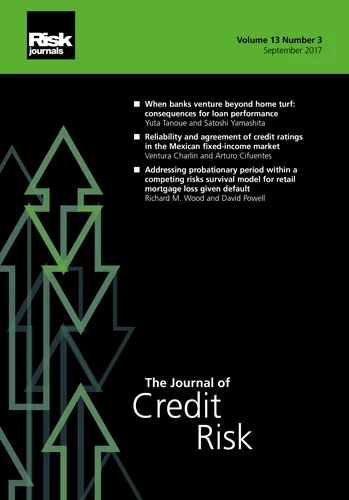Journal of Credit Risk
ISSN:
1755-9723 (online)
Editor-in-chief: Linda Allen and Jens Hilscher

On comprehensive balance sheet stress testing and net interest income risk attribution
Need to know
- A framework for stressed net interest income analysis that uses the matched-maturity asset and liability concept to synthetically separate the loan origination risks and the treasury strategic funding risk.
- Includes behavioral risks such as credit, prepayment, facility and deposit contingent drawdowns.
- The framework considerably simplifies the joint market and credit risk stress testing.
- Applied to conditional default and prepayment rate models as well as loan-level state transition models.
Abstract
The joint stress testing of net interest income, interest rate risk and profit and loss (P&L) from behavioral risks on a multi-horizon scenario path poses great challenges in enterprise stress testing and earnings risk attributions. We propose a framework for granular-level stressed net interest income calculation and profit-and-loss risk attribution. The proposed framework can accommodate the impact of interest rate risk on the net interest income and the impact of behavioral risks on the profits and losses, eg, prepayments and credit defaults, as well as facility and deposit contingent drawdowns at each horizon on a given scenario path. Our net interest income framework uses the concept of matched-maturity assets and liabilities to synthetically separate loan-origination risks and treasury strategic funding risks. It considerably simplifies joint market and credit risk stress testing by focusing, on the asset side, on the net interest income for the asset versus the matched-maturity liability and, on the treasury side, on the cashflows for the matched-maturity asset versus the actual liabilities. In this framework there is no need for exact cashflow generation on the asset side. The obtained net interest income process can be applied to both loan-level models and pools of homogenous loans. We illustrate the framework with conditional default- and prepayment-rate models as well as loan-level state transition models.
Copyright Infopro Digital Limited. All rights reserved.
As outlined in our terms and conditions, https://www.infopro-digital.com/terms-and-conditions/subscriptions/ (point 2.4), printing is limited to a single copy.
If you would like to purchase additional rights please email info@risk.net
Copyright Infopro Digital Limited. All rights reserved.
You may share this content using our article tools. As outlined in our terms and conditions, https://www.infopro-digital.com/terms-and-conditions/subscriptions/ (clause 2.4), an Authorised User may only make one copy of the materials for their own personal use. You must also comply with the restrictions in clause 2.5.
If you would like to purchase additional rights please email info@risk.net








